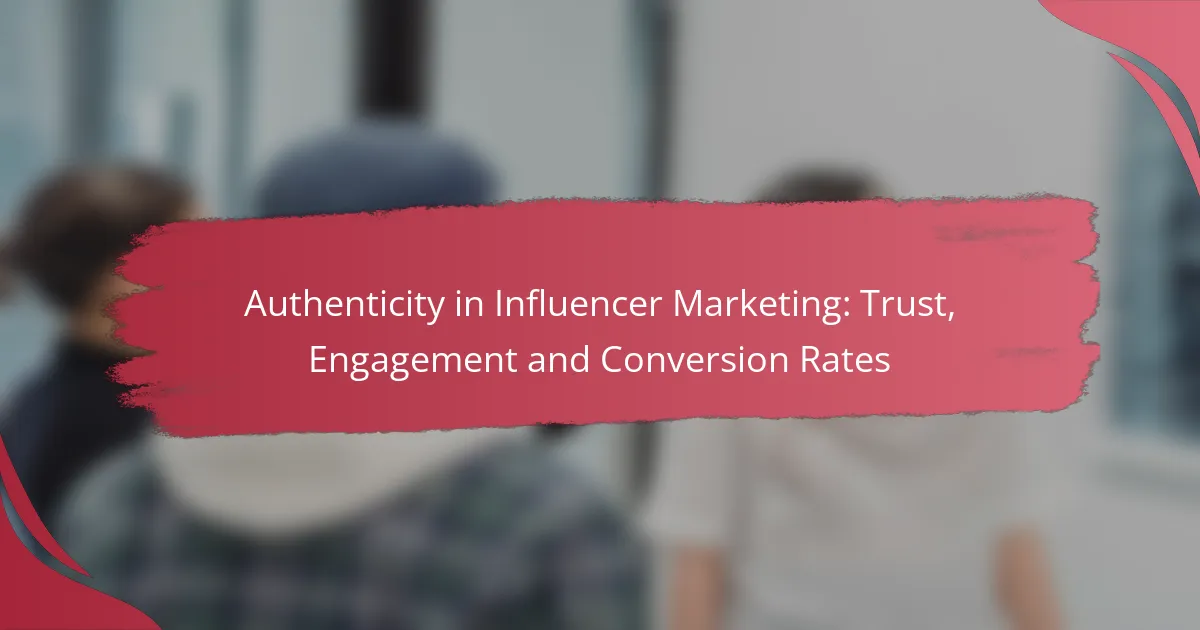Authenticity in influencer marketing is crucial for establishing trust and fostering meaningful connections between brands and their audiences. When influencers are perceived as genuine, they not only enhance engagement rates but also significantly improve conversion rates, leading to more effective marketing outcomes. By prioritizing authenticity, brands can create impactful collaborations that resonate with consumers and drive action.

How to Build Authenticity in Influencer Marketing?
Building authenticity in influencer marketing involves creating genuine connections between brands and influencers that resonate with audiences. This fosters trust, enhances engagement, and ultimately drives conversion rates.
Utilize Genuine Brand Partnerships
Forming authentic partnerships with influencers means selecting individuals who genuinely align with your brand values and target audience. This alignment ensures that the influencer’s audience perceives the promotion as credible rather than forced.
For example, a sustainable fashion brand should collaborate with influencers who advocate for eco-friendly practices. This not only enhances authenticity but also strengthens the brand’s reputation among environmentally conscious consumers.
Encourage Transparent Communication
Transparency is crucial in influencer marketing. Encourage influencers to disclose their partnerships clearly, whether through hashtags like #ad or #sponsored. This openness builds trust with their audience, who appreciate honesty.
Additionally, fostering open dialogue between brands and influencers can lead to more authentic content. Influencers should feel comfortable sharing their genuine opinions about the products, which can resonate more with their followers.
Leverage User-Generated Content
User-generated content (UGC) showcases real customers using your products, enhancing authenticity. Brands can encourage their audience to share their experiences on social media, which can then be featured in marketing campaigns.
This approach not only builds community but also provides social proof. For instance, sharing photos of satisfied customers wearing your apparel can be more persuasive than traditional advertising.
Focus on Niche Influencers
Niche influencers often have highly engaged audiences that trust their recommendations. Collaborating with these influencers can lead to more impactful campaigns compared to partnering with larger influencers who may have a more diluted reach.
For example, a small skincare brand might find success working with a beauty influencer who specializes in organic products, as their followers are likely to be interested in similar offerings.
Implement Authentic Storytelling
Authentic storytelling involves sharing relatable narratives that connect with the audience on an emotional level. Influencers can weave personal stories about how they use a product into their content, making it more engaging and trustworthy.
For instance, an influencer could share their journey of overcoming skin issues with a particular skincare line, creating a compelling narrative that resonates with viewers facing similar challenges. This approach not only promotes the product but also builds a deeper connection with the audience.
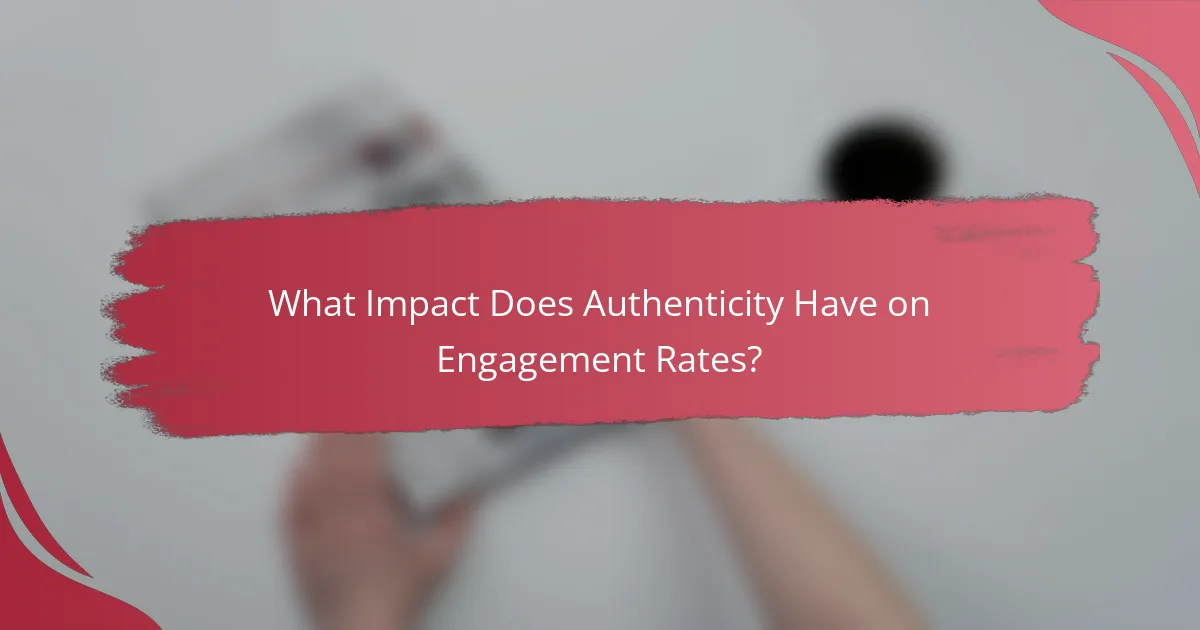
What Impact Does Authenticity Have on Engagement Rates?
Authenticity significantly boosts engagement rates in influencer marketing by fostering genuine connections between influencers and their audiences. When influencers are perceived as real and trustworthy, their followers are more likely to interact with their content and take action.
Increased Audience Trust
Authenticity builds audience trust, which is crucial for effective influencer marketing. When influencers share honest experiences and opinions, their followers feel more confident in the recommendations provided. This trust can lead to higher conversion rates as audiences are more inclined to purchase products endorsed by someone they believe in.
To enhance trust, influencers should focus on transparency, such as disclosing paid partnerships and sharing personal stories related to the products they promote. This openness helps followers feel a stronger connection and encourages them to engage more actively.
Higher Interaction Levels
Authentic influencers often see higher interaction levels, including likes, comments, and shares. When followers perceive content as genuine, they are more likely to engage with it, leading to increased visibility and reach. This heightened interaction can create a snowball effect, attracting more followers and potential customers.
To maximize interaction, influencers should encourage audience participation through questions, polls, or calls to action. Engaging with followers in the comments can also foster a sense of community, further driving interaction.
Enhanced Brand Loyalty
Authenticity can lead to enhanced brand loyalty among followers. When influencers consistently present themselves in a relatable and genuine manner, their audience is more likely to remain loyal to both the influencer and the brands they endorse. This loyalty translates into repeat purchases and long-term customer relationships.
Brands should collaborate with influencers who align with their values and mission to maintain authenticity. This alignment not only strengthens the influencer’s credibility but also reinforces the brand’s image, making it more appealing to consumers who value authenticity.
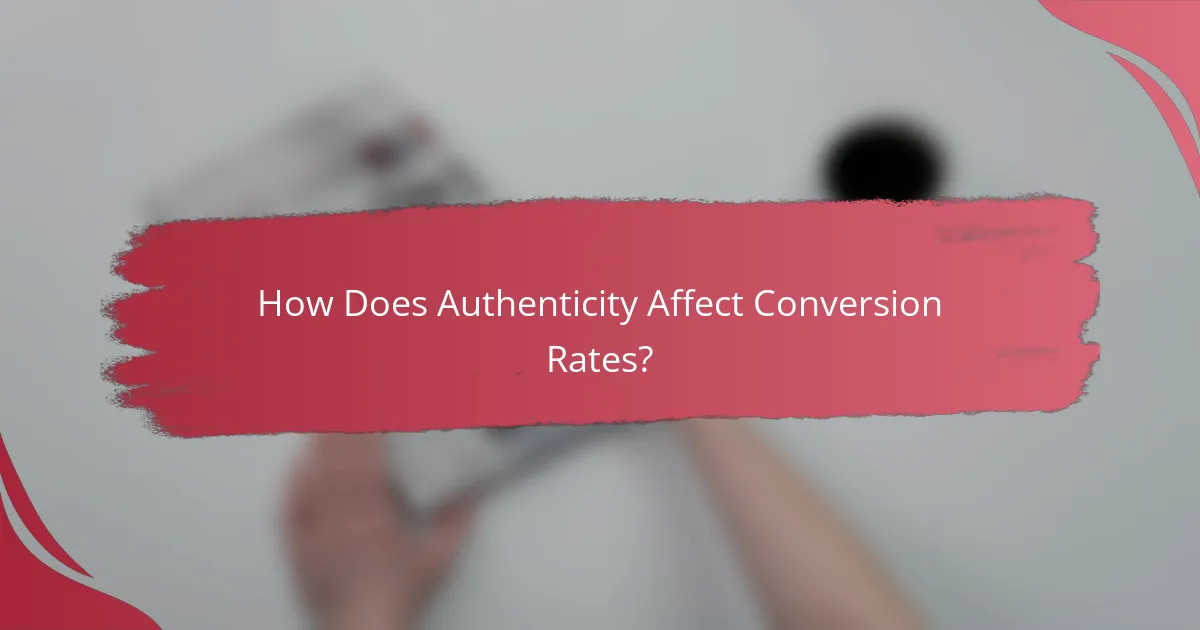
How Does Authenticity Affect Conversion Rates?
Authenticity significantly boosts conversion rates by fostering trust between influencers and their audiences. When followers perceive influencers as genuine, they are more likely to engage with their content and make purchases based on recommendations.
Improved Purchase Intent
Authentic influencers can drive improved purchase intent among their followers. When consumers feel a connection to an influencer, they are more inclined to consider their product recommendations seriously. This emotional engagement often translates into higher likelihoods of making a purchase.
For example, a beauty influencer who shares personal stories about using a skincare product can create a sense of trust, leading followers to be more willing to buy that product. Brands should select influencers whose values align with their own to maximize this effect.
Higher ROI on Campaigns
Campaigns featuring authentic influencers tend to yield higher returns on investment (ROI). Authenticity leads to more meaningful interactions, which can result in increased sales and brand loyalty. Brands can expect to see better performance metrics when partnering with influencers who genuinely connect with their audience.
For instance, a campaign that leverages a micro-influencer with a dedicated following may outperform a campaign with a celebrity influencer who lacks a personal connection. Brands should analyze past campaign performance to identify which types of influencers resonate best with their target market.
Lower Customer Acquisition Costs
Using authentic influencers can lower customer acquisition costs by streamlining the sales funnel. When followers trust an influencer’s recommendations, they may require less convincing to make a purchase, reducing the need for extensive marketing efforts.
Brands can capitalize on this by focusing on building long-term relationships with influencers who can consistently promote their products. This strategy not only cuts costs but also fosters brand loyalty, leading to repeat purchases and referrals.
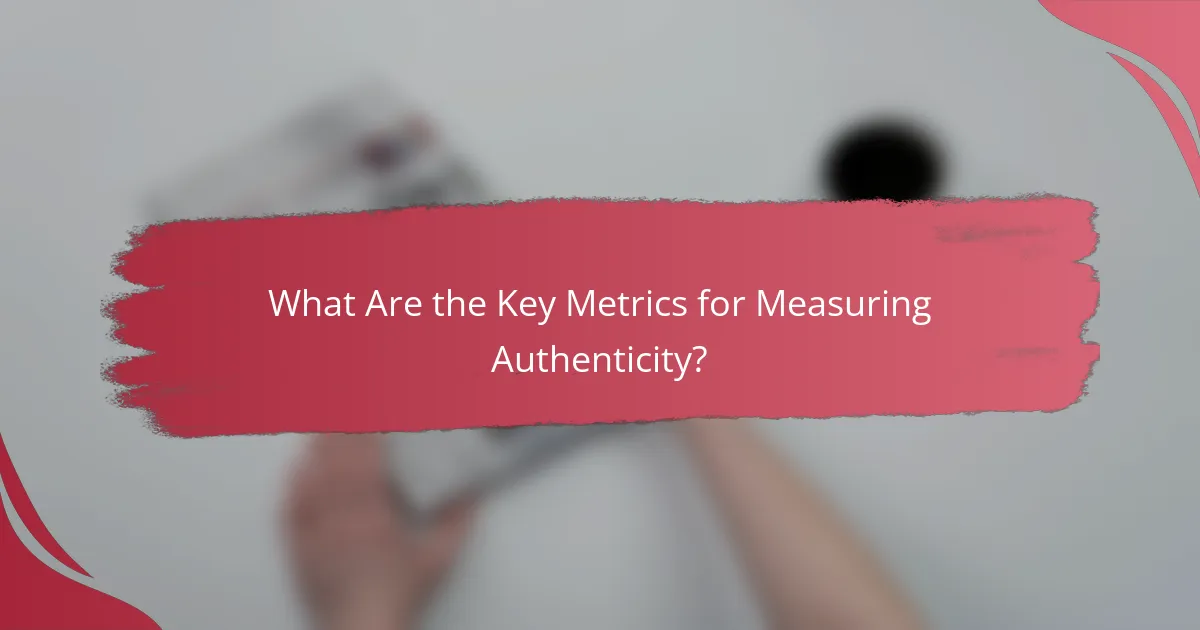
What Are the Key Metrics for Measuring Authenticity?
Key metrics for measuring authenticity in influencer marketing include engagement rates, conversion tracking, and sentiment analysis. These metrics help brands assess how genuine their influencer partnerships are and the effectiveness of their campaigns in building trust and driving results.
Engagement Rate Analysis
Engagement rate is a crucial metric that reflects how actively an audience interacts with an influencer’s content. It is typically calculated by dividing the total interactions (likes, comments, shares) by the total followers, then multiplying by 100 to get a percentage. A higher engagement rate often indicates a more authentic connection between the influencer and their audience.
When analyzing engagement rates, consider industry benchmarks. For example, engagement rates above 3% are generally seen as strong, while rates below 1% may signal a lack of genuine interaction. Brands should also look for patterns over time to assess consistency.
Conversion Tracking
Conversion tracking measures how effectively an influencer’s content drives desired actions, such as purchases or sign-ups. This can be done using unique discount codes, affiliate links, or tracking pixels. By analyzing conversion rates, brands can determine the ROI of their influencer partnerships.
To effectively track conversions, set clear goals and use analytics tools to monitor performance. A conversion rate of 1-5% is often considered average for influencer marketing, but this can vary based on the industry and campaign specifics. Always compare these rates against your overall marketing efforts to gauge effectiveness.
Sentiment Analysis
Sentiment analysis evaluates the tone and emotional context of audience interactions with influencer content. This can be done through social listening tools that analyze comments, mentions, and reviews. Understanding audience sentiment helps brands gauge the authenticity of the influencer’s message and its alignment with their values.
When conducting sentiment analysis, look for trends in positive, negative, and neutral feedback. A predominance of positive sentiment can indicate a strong, authentic connection, while negative sentiment may suggest issues that need addressing. Regularly reviewing sentiment can inform future influencer partnerships and content strategies.

What Challenges Do Brands Face in Achieving Authenticity?
Brands encounter several challenges in achieving authenticity in influencer marketing, primarily due to misalignment with influencers, the need for consistent messaging, and overcoming consumer skepticism. Addressing these issues is crucial for building trust and driving engagement.
Influencer Misalignment
Influencer misalignment occurs when there is a disconnect between a brand’s values and the influencer’s persona or audience. This can lead to inauthentic partnerships that fail to resonate with consumers. Brands should carefully vet influencers to ensure their audience demographics and values align with the brand’s mission.
For example, a luxury skincare brand may struggle if paired with an influencer known for budget-friendly products. To avoid misalignment, brands can create detailed profiles of their ideal influencers, including audience interests and engagement metrics.
Maintaining Consistency
Consistency in messaging is vital for brands to maintain authenticity across various platforms. Inconsistent content can confuse consumers and dilute brand identity. Brands should develop clear guidelines for influencer collaborations that outline key messages, tone, and visual elements.
Establishing a content calendar can help ensure that all influencer posts align with ongoing campaigns and seasonal promotions. Regular check-ins with influencers can also help maintain a unified brand voice.
Overcoming Skepticism
Consumer skepticism towards influencer marketing is growing, driven by concerns over authenticity and transparency. Brands must actively work to build trust by ensuring that influencers disclose partnerships clearly and authentically. This can be achieved through proper labeling of sponsored content.
Engaging influencers who genuinely use and believe in the product can also mitigate skepticism. For instance, brands can encourage influencers to share personal stories or experiences with the product, fostering a more genuine connection with their audience.
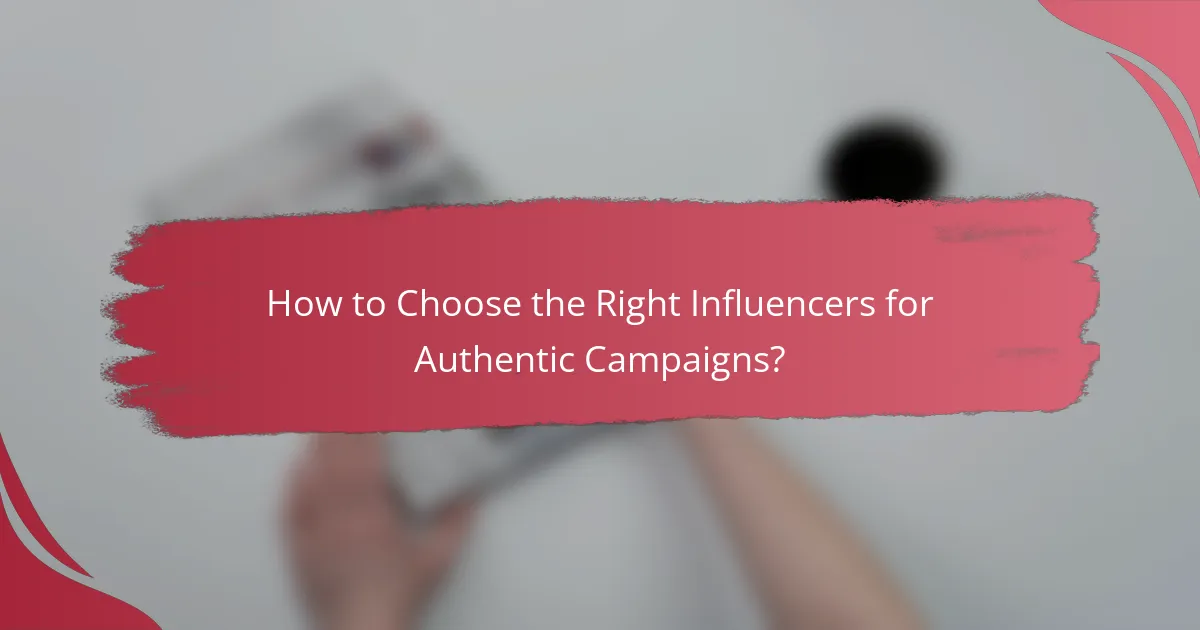
How to Choose the Right Influencers for Authentic Campaigns?
Choosing the right influencers is crucial for creating authentic campaigns that resonate with your target audience. Focus on influencers whose values align with your brand and who have a genuine connection with their followers.
Evaluate Audience Demographics
Understanding the audience demographics of potential influencers is essential for ensuring that your campaign reaches the right people. Look for influencers whose followers match your target market in terms of age, gender, location, and interests.
For example, if your product is aimed at young adults, consider influencers who have a significant following in that age group. Tools like social media analytics can provide insights into the demographics of an influencer’s audience, helping you make informed decisions.
Additionally, consider regional factors. If you are marketing in Europe, ensure the influencer has a strong presence in specific countries or cities relevant to your campaign, as cultural nuances can significantly impact engagement and conversion rates.
